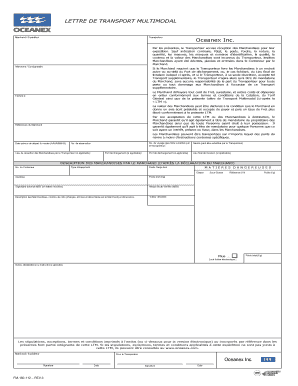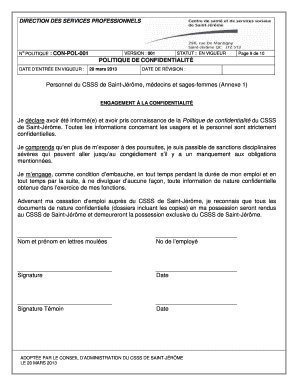Create a unique, customized consulting agreement in minutes. Why is an indemnification clause important? What are the two sample clauses? A consulting agreement indemnification clause is an important concept to be aware of if you own a business and find yourself entering into a contract with a consultant.
Indemnification by Consultant. In fact, most large companies require an indemnification clause in the consulting contract to ensure that it will be protected from liability in the event of a legal suit due to insufficiencies in the consultant’s work or potential legal issues arising from the work conducted by the consultant. SAMPLE CONTRACT CLAUSE Consultant agrees, to the extent permitted by law, to indemnify and hold harmless but shall have no obligation to defend the Client and its officers, directors and employees (collectively “Client”) from and against liability for damages to the extent actually caused by the negligent acts, errors or omissions of Consultant and its subconsultants, or anyone for whom the Consultant is legally liable, in the performance of professional services under this Agreement. See full list on utsystem. This indemnity is for use in materials transfer agreements, University transferring.
This paragraph adds obligations concerning notification and defense of claims and cooperation. It may be added to any indemnification upon Sponsor’s request or at the discretion of the component. Both parties agree that upon receipt of a notice of claim or action arising out of the activities to be carried out pursuant to the project described in Attachment A, the party receiving such notice will notify the other party promptly.
An indemnification clause is used to hold the client harmless from any damage, liability, or loss caused by the consultant while they perform their services. Consultant shall indemnify and hold Client harmless from any loss or liability arising from performing Services under this Agreement. The contractual liability exclusion will bar their recovery.
Sponsor agrees, at its own expense, to provide attor. This Risk Note addresses the indemnification clause while another risk note addresses insurance clauses and sample wordings. HIROC recommends subscribers have their corporate counsel (and privacy officer if personal health information is involved) review all contracts.
Refer to related Risk Notes for further details: 1. Hold Harmless– the hold harmless provision of the indemnification clause absolves the second party of any blame for any loss caused by the first party’s negligence, after the loss has been determined by litigation, arbitration or settlement. Contracts – Important Clauses 2. Defend – The indemnifier agrees to pay the other party’s legal expenses as it. If the provider of goods and services reneges on the contractual obligations, and the other party suffers a loss, the provider of the goods or services can be obligate by the indemnity clause , to make good on the promise or compensate the other party for subsequent losses. The indemnity clause should clearly identify the party responsible for the payment of a loss. If the parties have purchased insurance, they transfer the responsibility of indemnifying the aggr.
For instance, if your contract includes a mutual indemnification clause , it means that both contracted parties have agreed to cover losses that result from a breach of contract. An indemnification provision, also known as a hold harmless provision, is a clause used in contracts to shift potential costs from one party to the other. In a mutual indemnification , both parties agree to compensate the other party for losses arising out of the agreement to the extent those losses are caused by the indemnifying partys breach of the contract.
In a one-way indemnification , only one party provides this indemnity in favor of the other party. The primary benefit of an indemnification provision is to protect the indemnified party against losses from third party claims related to the contract. They are typically used in agreements where the risks associated with a partys non-performance, breach, or misconduct are high. For example, agreements that involve the sale of intellectual property rights often include an indemnification by the seller in order to protect the buyer against the potentially large liability associated with an infringement lawsuit by a third party. The following is an example of a basic mutual indemnification provision.
Remember, any indemnity must be tailored to your specific needs. Lets say you commission a writer to prepare a speech for you on a work- for -hire basis. Instead of delivering an original speech as promised under the contract, the writer incorporates passages from a speech by another person who then sues you for copyright infringement, claiming that his intellectual property was exploited without his consent.

Your agreement with the writer includes a representation and warranty that the work product provided under the contract is original. It also has a standard indemnification provision that promises to hold you harmless from any losses or damages, including attorney fees, incurred as a result of any breach of the agreement. Pursuant to the indemnity, the writer would be obligated to handle the legal defense related to the other writers intellectual property infringement lawsuit against you and cover all of the losses and expenses you incur as a result of the infringement claim.
You would want to include additional language depending on your circumstances. For example, an indemnification can be limited to specific third party claims (such as those related to a breach of warranty), or restricted to only those situations where a lawsuit has been filed or a final judgment has been rendered. If you are the party providing the indemnification , you will want to make sure the clause is as narrowly tailored as possible to protect against the specific risk it is intended to protect against. There are certain exceptions however.

Certain states also prohibit indemnification provisions that provide for punitive damages. Check all applicable laws before drafting an indemnity. Additionally, courts have commonly held that a plaintiff may not recover damages under an indemnity clause to the extent that the damages are an unforeseeable and improbable outcome of the other partys breach, negligence, or misconduct (unless it can be shown that the indemnifying party had knowledge of the relevant circumstances).
They should be broad enough to sufficiently address the parties concerns, yet reasonable and equitable in all respects so that their enforceability is not called into question. Start your agreement to help clarify the terms of involvement in your business. An indemnification clause allows the consultant to work and provide their services while providing indemnification to the client for any consequences as a result of their work. Depending on the agreement type, the indemnification may or may not cover negligence and other liabilities whose fault is directly.

INDEMNIFICATION AND ALLOCATION OF RISK. LESSEE agrees to be responsible for and pay, indemnify and hold harmless the City of Athens, Tennessee, its officers, agents and employees against any and all l. Last week we looked at the importance of naming the right parties. This week, we’re jumping ahead to indemnifications. In this focus article, we look at how to recognise some of the common types of indemnity clauses and points to consider when employing such.
This language is included in cases where there is a possibility of loss or damage to one party during the term of, or arising from the circumstances of, the contract. A project brief should be attached as Schedule 1. Looking for information about Your Search? Get for your search on Etour.
No comments:
Post a Comment
Note: Only a member of this blog may post a comment.